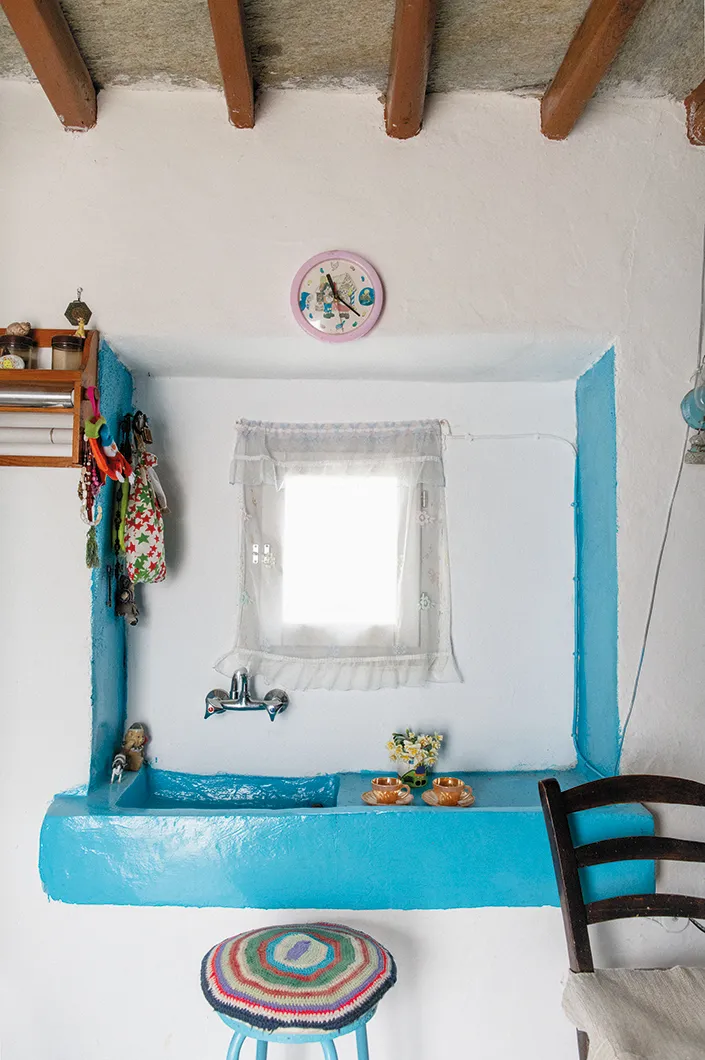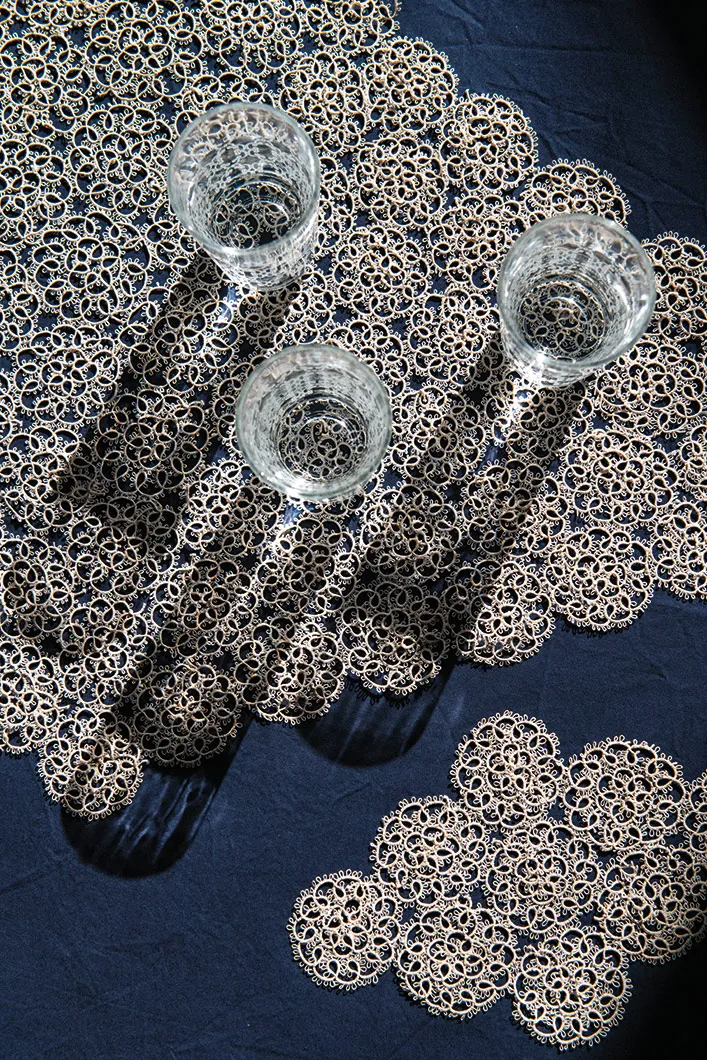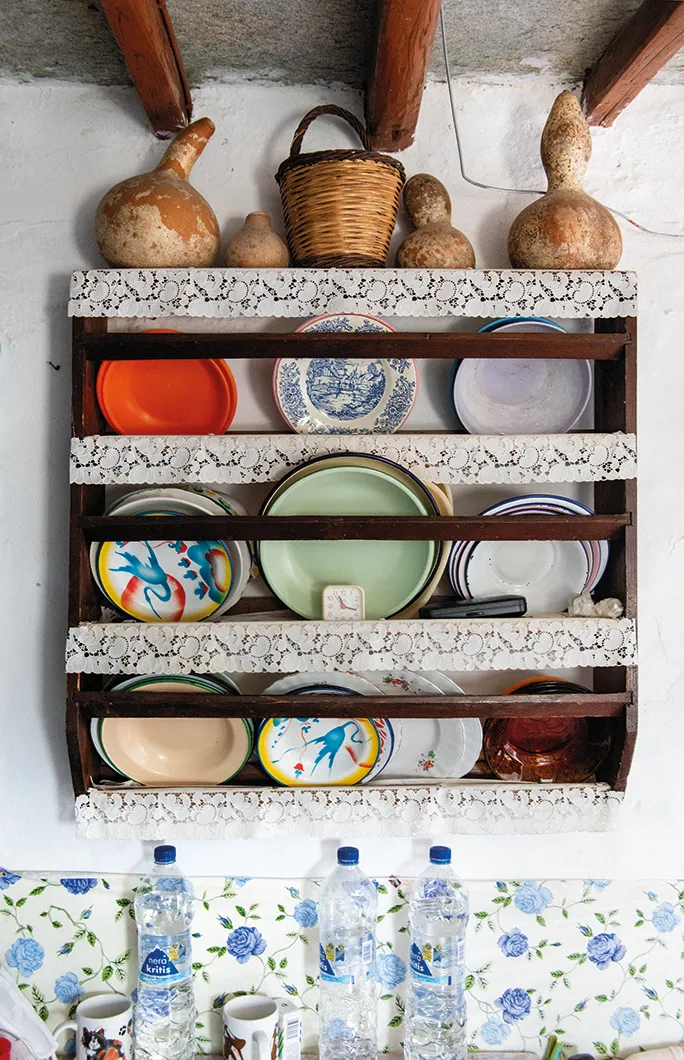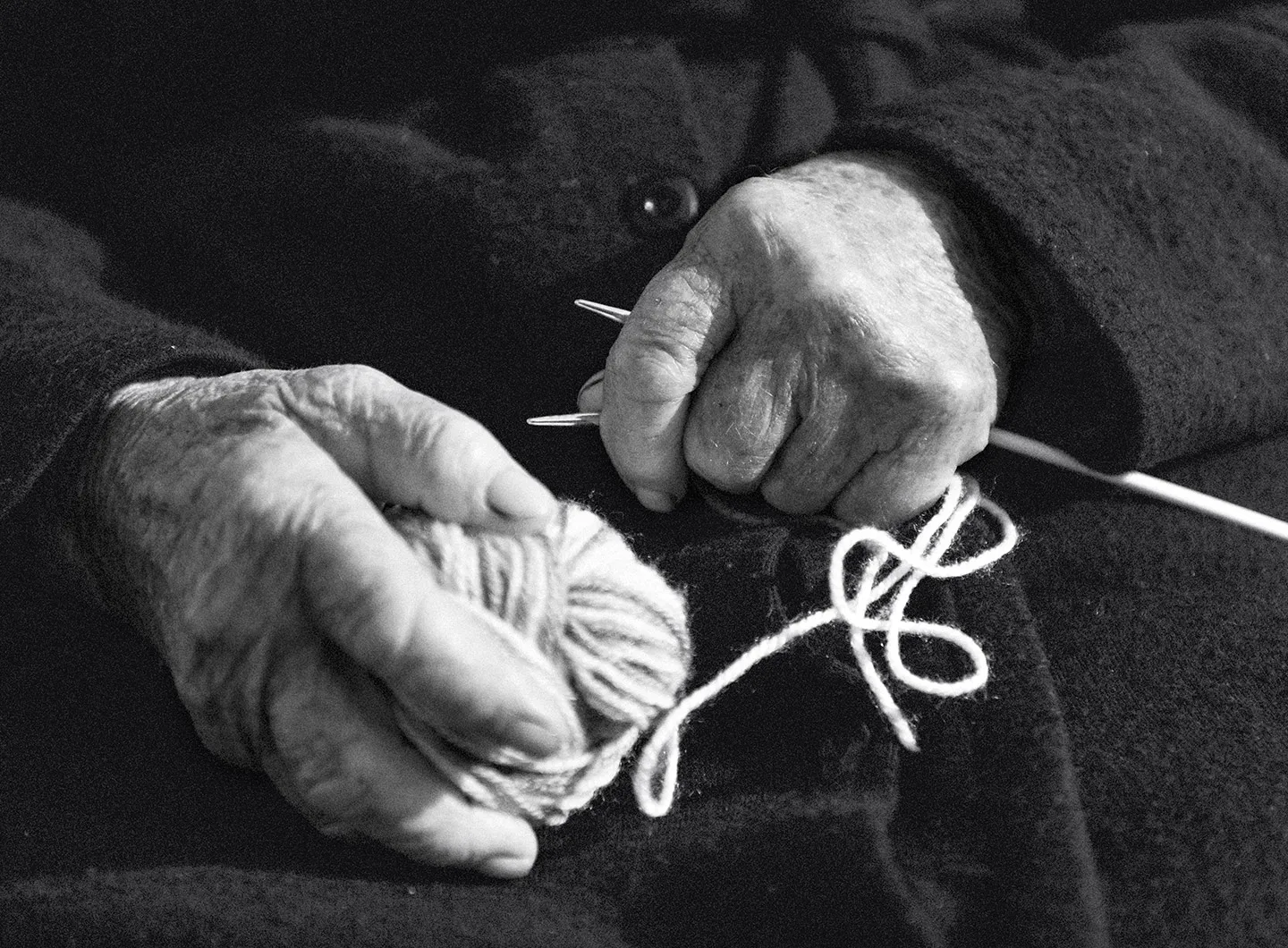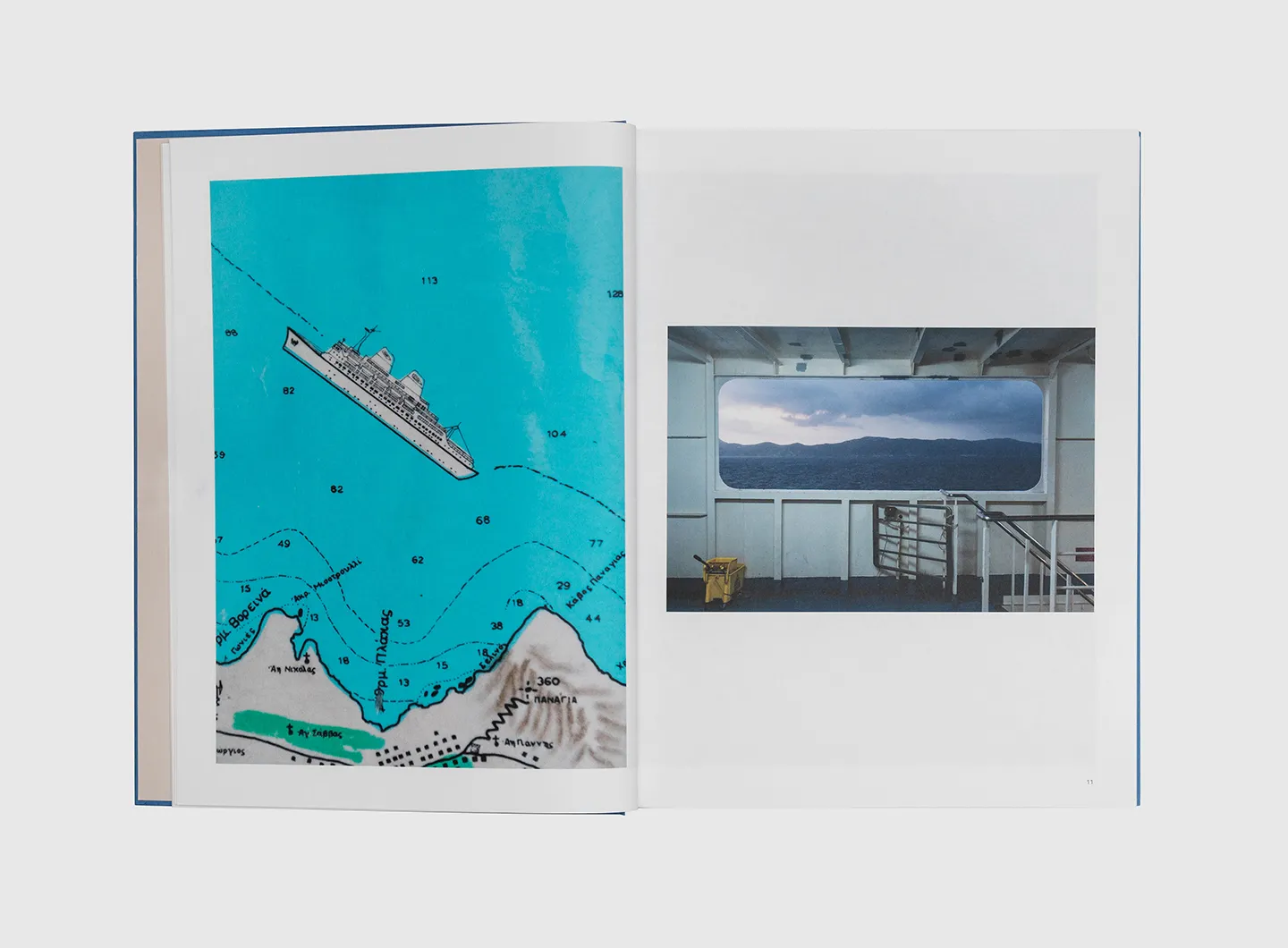In partnership with MiCodmc, a selection of establishments ripe for discovery during the 63rd edition of the Salone del Mobile.Milano, from 8th to 13th April
The power of a place. An illustrated story by Ciarmoli and Queda
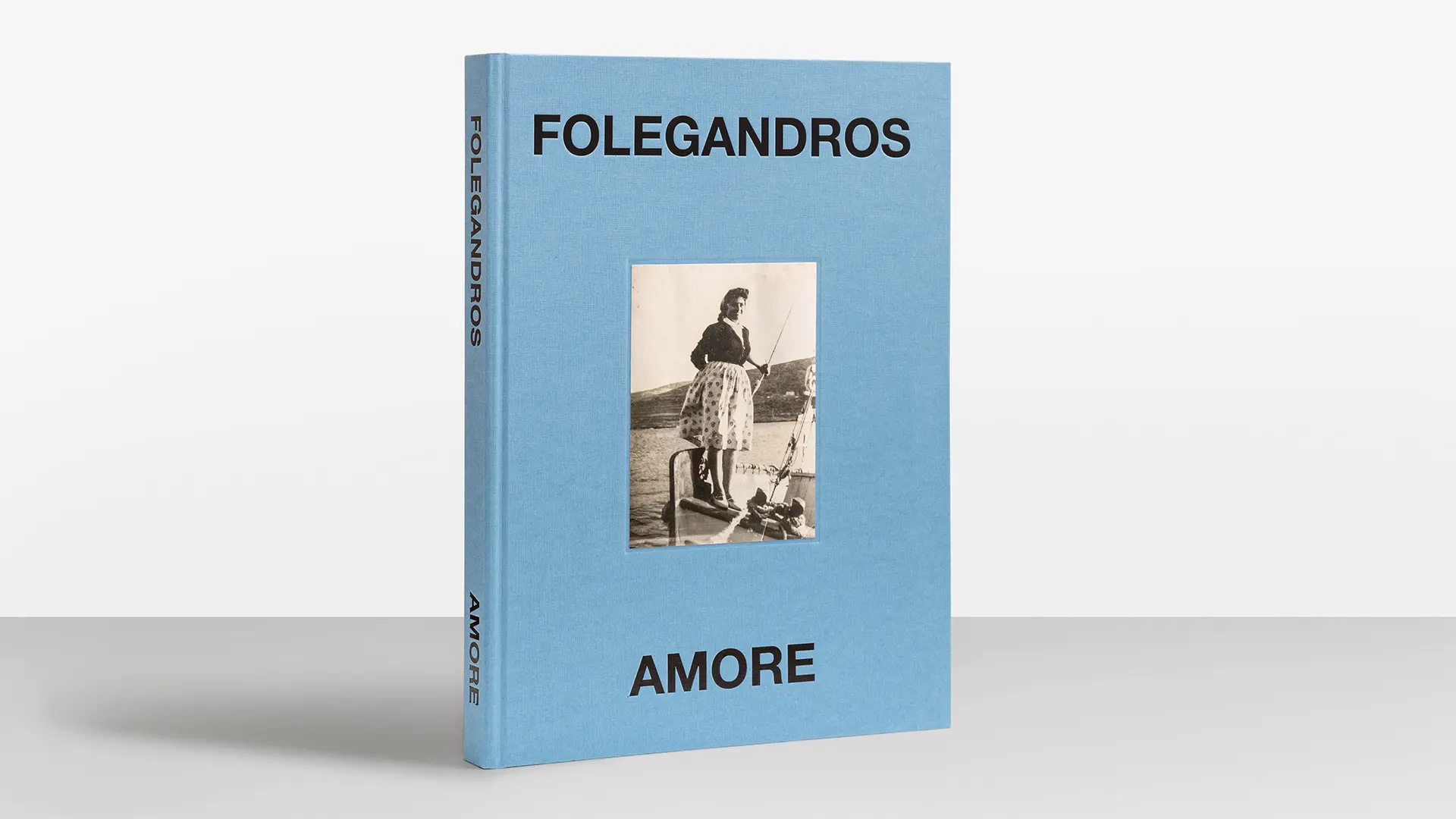
“Folegandros has become the dwelling-place of our souls” – a declaration of love for a Greek island takes the form of a book. Redolent with freedom, strength and solitude.
Can a book be a love letter? The answer is yes, and this becomes gradually clear as we leaf through its nearly 200 pages bound in a blue cover, the same blue as the sea. The sea around the Greek islands. It is to one of these, in the Cyclades, that this loving missive is directed. It comes from Simone Ciarmoli and Miguel Queda, designers who started out in the fashion world and gravitated to interior design – their projects for the Salone del Mobile.Milano include Before Design: Classic (2016) and DeLightFuL (2017) with a short film d’auteur by Matteo Garrone – as well as the island. They discovered it by chance a few years ago and immediately chose it as their buen ritiro. Largely because it was love at first sight and also “because it has no airport. It is accessible only by ferry and even in the summer, the trip takes several hours.” We learn this from the preface to Folegandros Amore by the renowned American journalist Pilar Viladas, sent to the island by her editor for a reportage on the home of the two creatives.
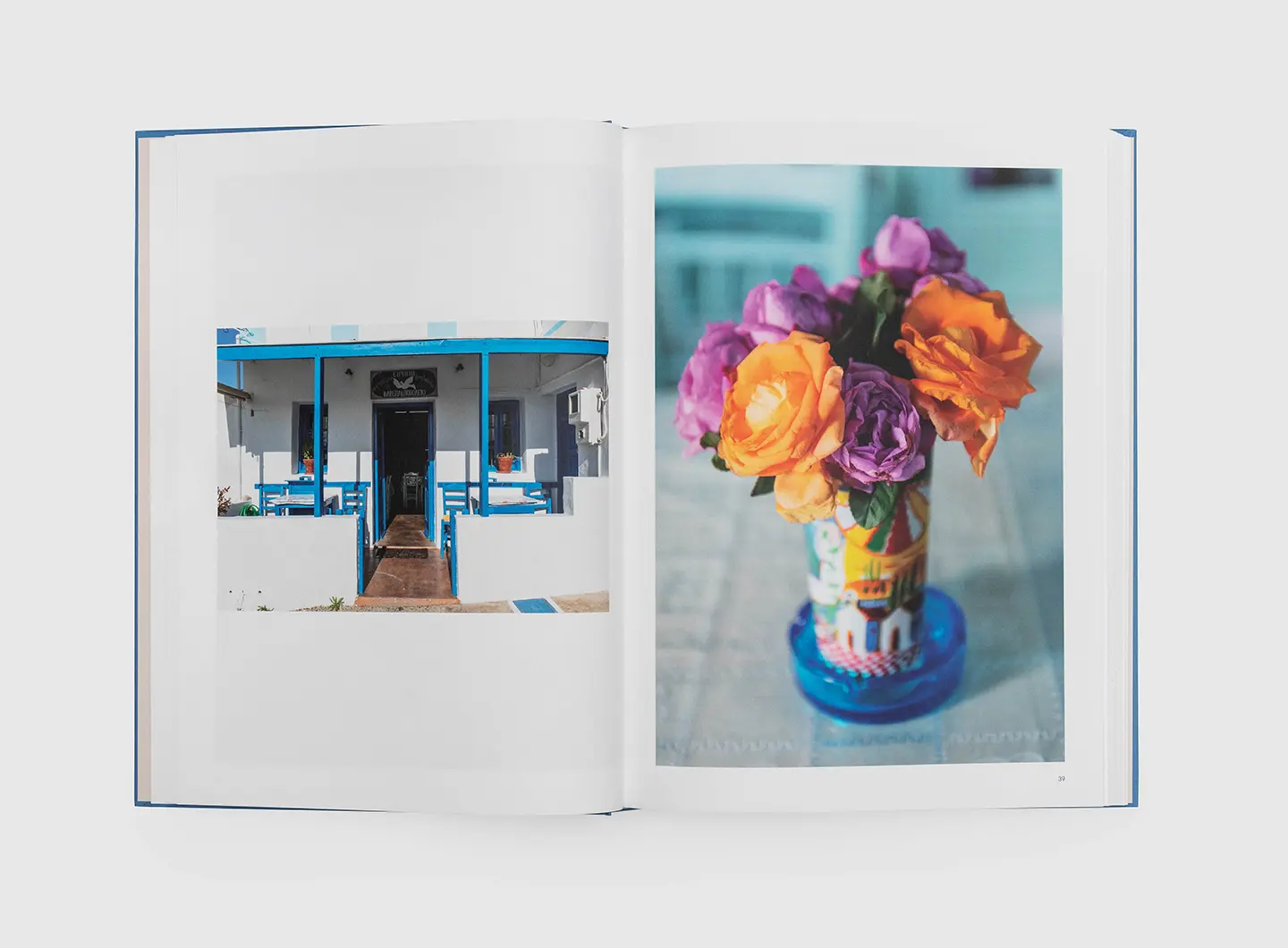
Folegandros is certainly not on the tourist map. In winter, there are just about 350 inhabitants. As is often the case in these sorts of places, tourists are seen as invaders and therefore being able to talk to the locals is no easy matter. “By getting to know the inhabitants, we were able to build a special relationship with the island. Just as the light sums up the essence of this place, the people and their stories make it special. People and their stories have become tremendously important for us - their authenticity still moves me.” Some Folegandrians, as they are known, almost half of them, were portrayed with these intimate, simple pages in mind, of which the photographs – taken by Theo Vranas and edited by the two designers – are the true protagonists. Rigorously black and white, they speak for themselves. They are “direct and affectionate [images], obviously taken by someone who knows these people well and admires them,” writes Pilar Viladas. Stills that capture the weather-beaten faces lined by the wind and the sun, ancient faces framed by scarves knotted under chins, men wearing fishermen’s berets or riding their donkeys, wind-blown hair, hands folded over walking sticks with fish-shaped handles or busy with balls of wool and knitting needles, broad smiles and faraway looks, or just performing spontaneous, everyday gestures, like kneading. People who live and work there, snapped in their simple sitting rooms, in their small kitchens where everything is spotless and functional. They are portraits of true human essence. Each face, each person has a name, stamped at the end of the book as if to seal the memory. “As the years have passed,” the authors write, “we’ve become friends with the locals and learned their stories, what makes them happy and, sometimes, what makes them sad.” Like the epic tales of Katerina Papadopoulos, immortalised on the cover and in some of the middle pages, who “(still) gets emotional when she sees the full moon and […] even in this digital age, rings us to tell us about the moon,” Ciarmoli and Queda write affectionately. She also talks about her father, the well-respected Captain Yannis, who built her house – a building which, like many of those on the island, has no foundations and simply rests on the contours of the land: “the furniture has to have legs of different heights because of the uneven floor,” say the designers.
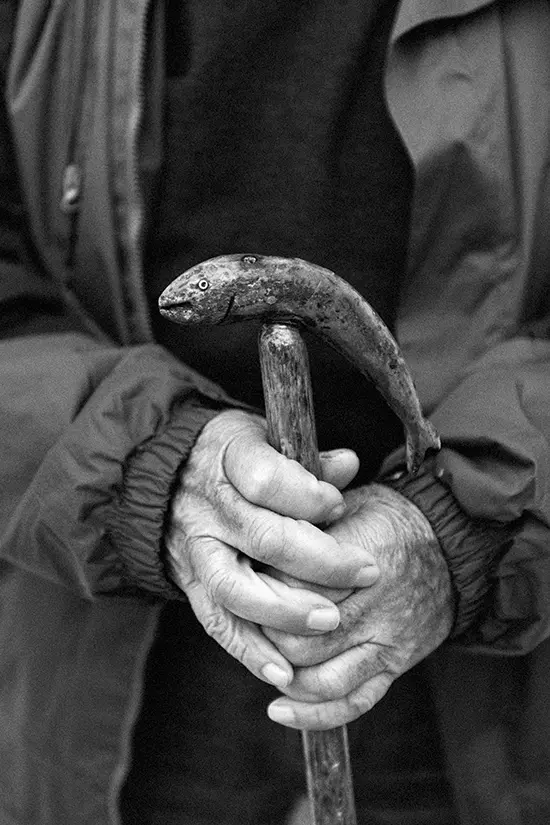
The pages of the book also explore the island, working from the sea inland towards its hills, its alleyways, its little squares, its churches and its houses: the Cycladic architecture, alluded to earlier, is “diminutive, suspended in equilibrium, floating almost, with the sort of static stability that modern engineering would give an eye tooth for.” Architecture that is also echoed by the designers’ house, “elegant but not ostentatious,” writes Pilar Valadas. “Its rooms are comfortable, but not enormous and its focus is on the mesmerising views of the blue sea. Some of these views are panoramic, others are “Zen” views through small windows – which are in some ways even more powerful.”
Leafing through the book, one is left with three distinct impressions: “freedom, strength and solitude” – those experienced by Ciarmoli and Queda the first time they set foot on the island and crossed the wild canyon on the way to Chora, the main town. Then there is the spellbinding light that sparkles on the waves, bathes the whitewashed walls and people’s faces, or filters through three glasses on a lace tablecloth, the “light that maps out and sketches the essential volumes and the landscape.”
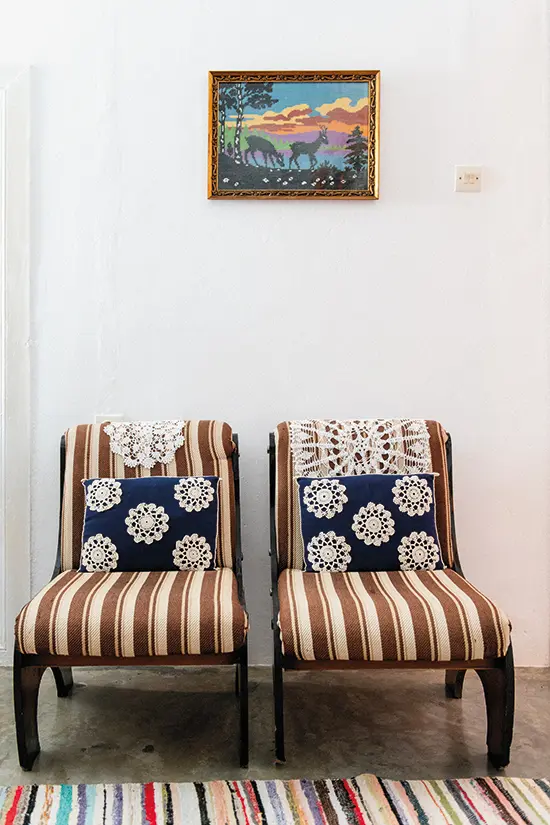
They discovered this landscape in the summer of 2007, and saw it for a second time that autumn, not long after. “November, I could hardly believe my eyes. I was struck by the sheer beauty […], remembers Simone. “From that day on, Folegandros has stuck in our minds.” And since then, between one commitment and another, Ciarmoli and Queda have continued to return, pouring their love of Greece into this place. “Folegandros has become the dwelling-place of our souls. It wasn’t enough. Passion knows no parsimony. Folegandros has given us unique experiences,” they add. “Something had changed, we’d sealed a pact that was slightly mythical in itself. The proclamation of a destiny: you are Folegandros.” Perhaps we are too, a little – captivated – as was an exceptional reader, Marva Griffin, founder and curator of SaloneSatellite.
Title: Folegandros Amore
An editorial project by Simone Ciarmoli and Miguel Queda
Introduction: Pilar Viladas
Photography: Theo Vranas
Published: 2021
Pages: 196


 Stories
Stories
